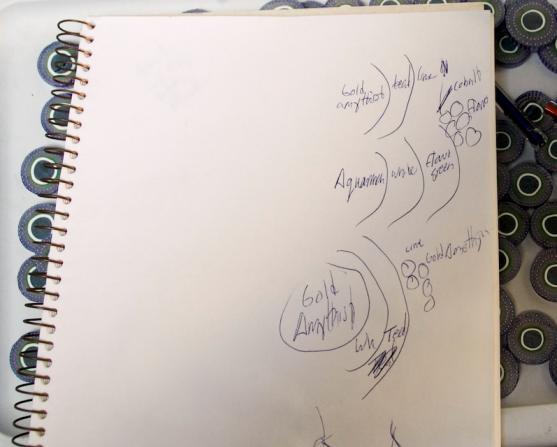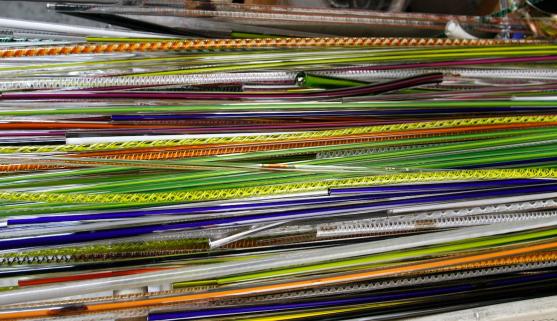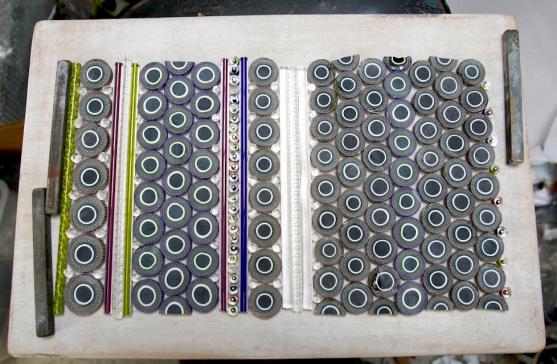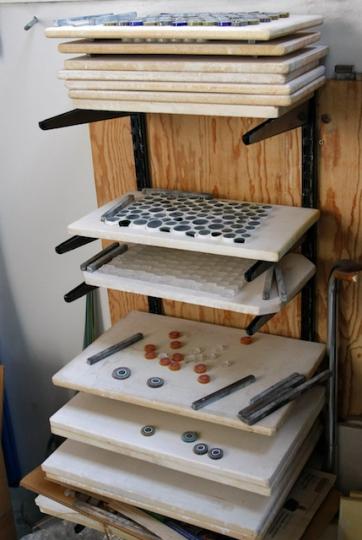The design for any piece begins by considering the form and style of work, choosing the colors, determining their relationship to each other, the pattern (if there is one) and the placement of colors within the pattern. This is all thought out long before any cane or murrine are made.
About color: There are myriad ways color can be incorporated into glass. Specialized suppliers create concentrated colored glass which 99% of glassblowers use to color their work. This colored glass can be purchased in a range of forms--from solid rods to small chips (like rice) or even powder. The colored glass can be rolled in with a hot gather of clear glass, overlayed, wrapped, threaded, etc. around a bubble. I purchase color mostly in rods roughly 20" long and 2" in diameter.












